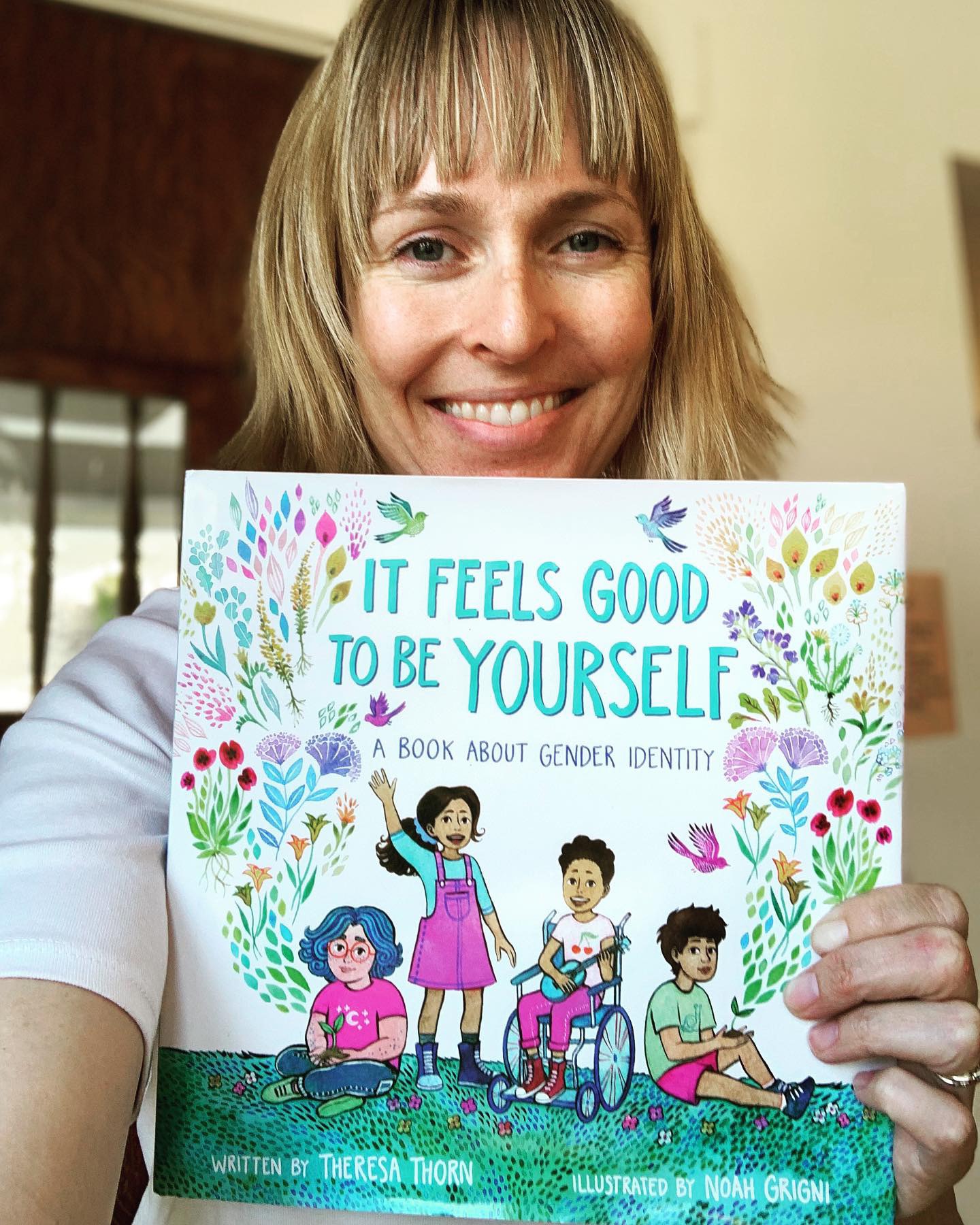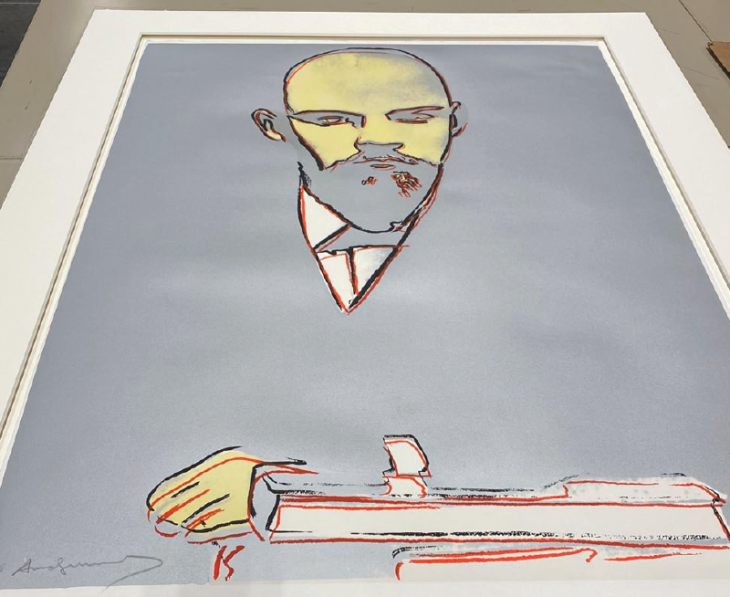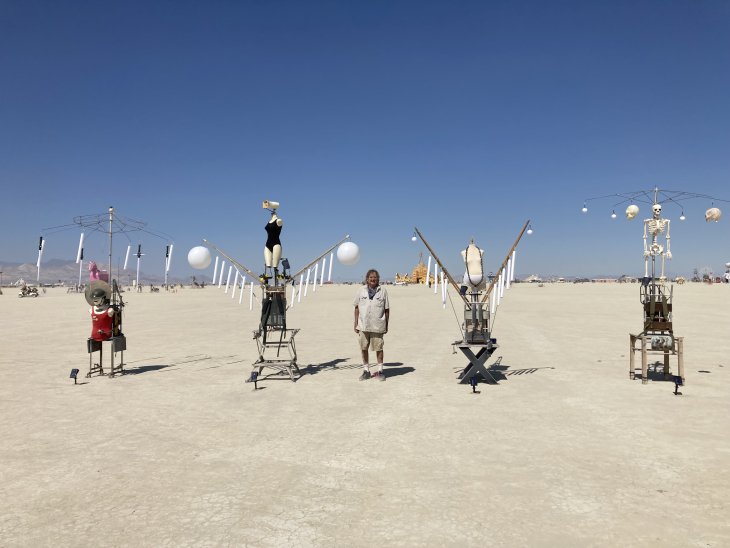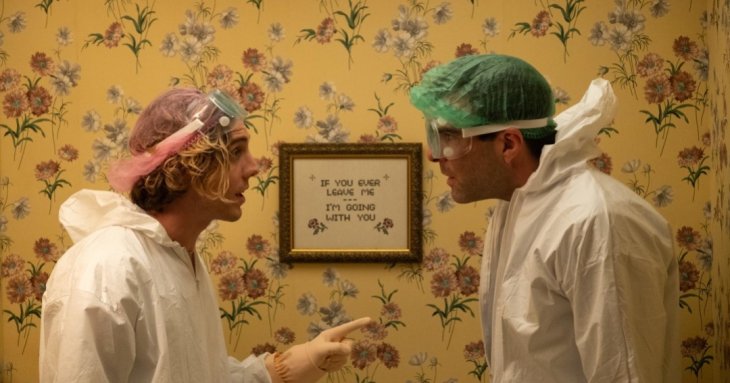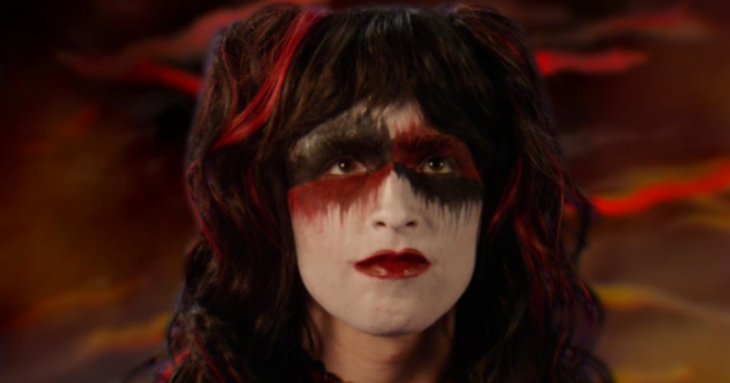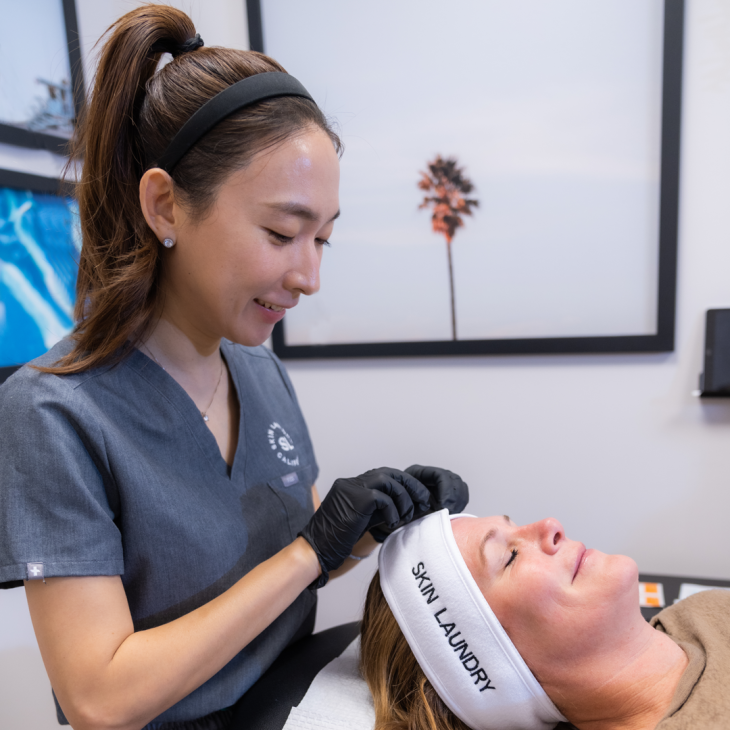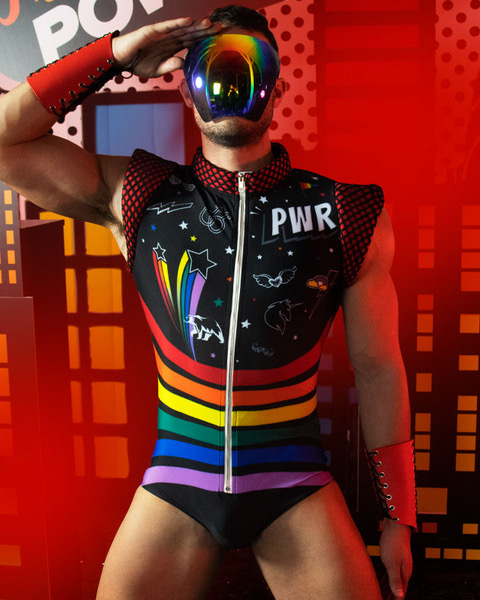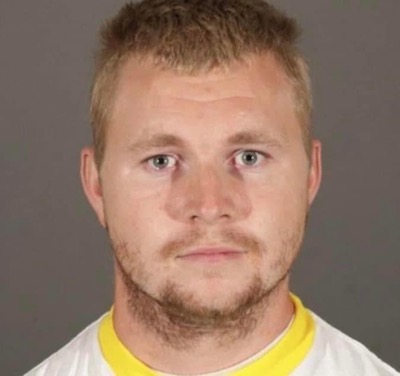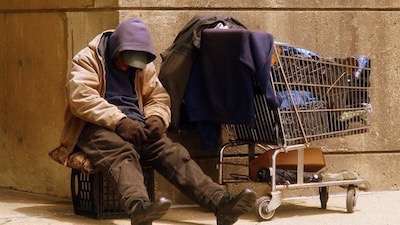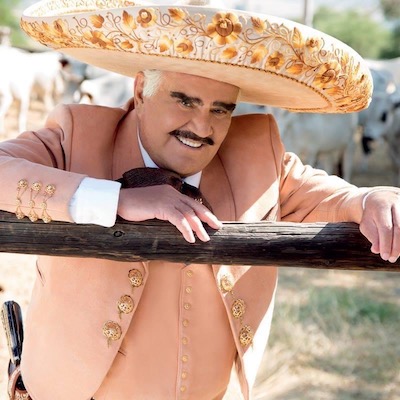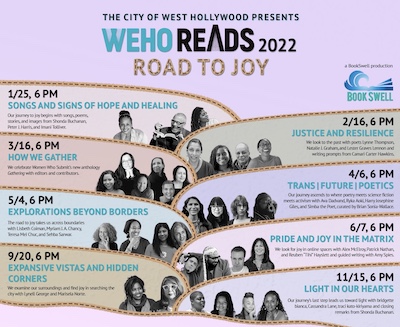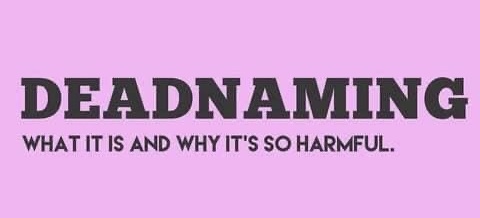Navigating gender can be confusing for anyone. Now imagine being a cis straight parent with a transgender daughter ready to be her authentic self. Even with the best of intensions, this is a tricky situation with essentially no roadmaps – or literature that emphasizes “otherness” in trans folks. That’s what one Los Angeles mother and parenting podcaster encountered at least. Check out the Pride LA’s interview with author and LGBTQ+ ally Theresa Thorn about her experience creating a picture book, “It Feels Good to Be Yourself” as a tool for other parents in similar situations:
Can you tell me a little bit about yourself?
I live in Los Angeles with my husband Jesse, our three children, and two scruffy dogs. I’m the co-host of Maximum Fun’s parenting podcast, One Bad Mother. It’s a weekly show that’s been running for over six years, with over 300 episodes now in our archive. Biz Ellis and I approach parenting topics with humor and a non-judgmental attitude, and despite the title we aim to make the show inclusive of all types of parents, not just people who identify as “moms.” Biz and I co-authored a parenting humor book in 2017 (Countryman Press) called “You’re Doing A Great Job! 100 Ways You’re Winning At Parenting.”
During the course of making the podcast, as our children have grown up, Biz and I have encountered many parenting experiences we hadn’t expected. For me, the most impactful was that my eldest child came out as transgender at the age of 5, when we were about three years into the podcast. In the course of supporting my daughter through her social transition and figuring out how to talk about it on the show, I have learned so much more about gender than I ever thought I would, and I see the world differently now.
What does your family structure look like?
My husband and me, plus our three young children, ages 7, 5, and 2. We also have extended family who are an active part of our lives but don’t live locally.
What prompted you to write the book?
When my eldest child, who I had thought was a boy, began expressing that she felt like a girl at age 5, I sought out picture books to help facilitate conversations in our house about gender and different forms of gender expression. I found several excellent picture books that helped a lot, most of them with a narrative about a child who felt different, faced some adversity, and was ultimately accepted by their community or family. The best part about the books for us was the examples of different kinds of children feeling a variety of different ways about their gender. My daughter was able to say, “That’s like me! That’s how I feel!” when she read about some of these other children. On the other hand, the part I liked less about some books was the implied premise that the world is cisgender and anyone different will need to explain themselves.
My own learning about gender had helped me to understand that all people have our own unique sense of our own gender, with our own unique ways of expressing it. In our house, I was enjoying conversations with my children (just two of them at the time, ages 3 and 5) and noticing that my three year old, who was more “conforming” in his gender expression, also wanted to express his feelings about his gender, just as much as my 5 year old, who was in the process of discovering her trans identity. I wanted a book to read with my children and their friends that didn’t single out my trans child for her differences, but rather explored and celebrated the amazing diversity of all children in how they identify and express their gender.

Before the gender revelation with your daughter, what was your interaction/ association with the LGBTQ+ community like?
I’ve always considered myself an ally but my sense of connection to and appreciation for the community is obviously much stronger now. I was fortunate to have plenty of exposure to the LGBTQ+ community as a teen and young person because I was an art student in high school in San Francisco, and went to a very LGBTQ+-friendly college. When my daughter started saying she felt like a girl, I had friends in the community I was able to reach out to.
What are some setbacks/difficulties navigating gender identity as a cis straight couple?
I think the first one was our assumption that our children would be “like us.” Ha! Of course we knew trans people but our basic, unspoken assumption was our kids would be cisgender like we are. That was our bias, our experience of the world. And it was a significant setback because our daughter could have been living as her authentic self much sooner if she hadn’t had to first convince her parents that she is who she is. So, there’s some guilt there, for me. Another difficulty is just that although I am a girl and my daughter is a girl, I will never know what it’s like to be a trans girl. There are things I wish I knew about how she felt, or what she’ll need, and things I know I’ll misunderstand or get wrong, even when I’m trying.
What are some resources for your family that you have found helpful?
GenderSpectrum.org played a huge part in my education around gender, and has been a helpful resource I’ve been able to share with friends, family, and our kids’ schools. All of my proceeds from my book are going to support the work that they do to create safe, inclusive environments for all children and youth. Locally, Transforming Families is a parent support group and playgroup for kids, which was helpful for our family in the early days of our daughter’s transition. My book also has a huge resources section in the back.
What were some resources that you found helpful when writing the book?
All the resources I used in educating myself more deeply about gender when my daughter was five played a role in this book, though not exactly directly. I also reached out to several trusted friends who identify as trans or gender nonconforming to seek feedback on first drafts, and they were very helpful. My mom is a marriage and family therapist who works with teens and she also read a draft and provided valued feedback. During the editing process, I also received important input from my wonderful editor, Kate Farrell, and the book’s incredible illustrator, Noah Grigni.
What has the overall public response to the book been like?
It has been wonderful! I’ve so enjoyed hearing from families all over who are reading the book with their young kids and having interesting new conversations about gender in their homes. The most special have been responses from parents and kids who really felt they needed a book like this and feel validated by it.
Do you have any future plans for the book or other forms of gender/LGBTQ+ activism?
To be 100% honest, my three kids and part-time work keep me so busy these days, I hardly know which end is up, and mostly just deal with what is right in front of me! I will say I am so proud of this book and happy that it’s out in the world, and I look forward to watching it make its way in the world and doing whatever I can to continue to support gender diversity in our country and the world.
Where can folks buy your book?
Everywhere books are sold.
Can you tell me a little bit about the event on Saturday?
Saturday at 2:30 at Children’s Book World in West LA. I’ll be reading the book, signing copies and saying hello! This is an all-ages event and I hope people come and bring their kids. I’m looking forward to it.

